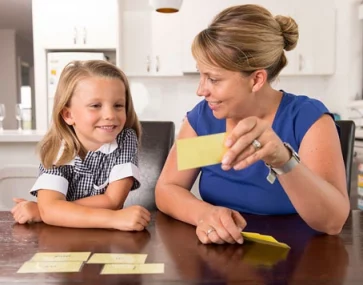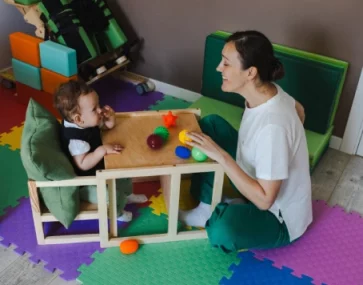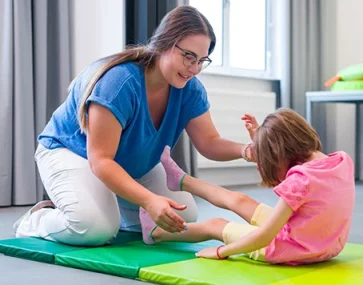The Safe and Sound Protocol (SSP) is all about the importance of feeling SAFE. It makes use of SOUND to assist in evoking the sense of safety and therefore enabling the working of the skills-part of the brain to perform at its optimal level. For any child with sensory processing difficulties, as regularly seen by Occupational Therapists, this therapeutic modality may be of benefit.
The SSP is a practical application of the Polyvagal Theory initially presented by Dr Stephen Porges (1995). Dr Porges is an American Psychiatrist and neuroscientist.
The Polyvagal Theory is based on the function of the Autonomic Nervous System. As part of the mammal (animal) species, this unconscious, automatic and ‘’primitive’’ system, is an important factor in the survival of human evolution as it serves to protect us from becoming distinct by activating the ‘’fight and flight’’ response when we need protection, and in contrast, also the ‘’rest and digest’’ response when we can learn, socially engage, and play. Dr Porges however identified a 3rd branch to the Autonomic Nervous System, characterised by a state of ‘’shut-down’’, ‘’overwhelm’’ or “freeze’’, which is active if the neurological system has almost gone hiding because the world is at that stage too much to handle – in other words it is also protecting – albeit in a way that shuts us off from social engagement, learning and playing. See below the Polyvagal Ladder (Deb Dana).
The Polyvagal Theory compliments the Sensory Integration frame of reference in the field of Occupational Therapy, where the focus is in the first place to enhance regulation and organization of sensory processing to enable the child to access the thinking and skills part of the brain (higher cortical functions).
Why Is This Important To Know?
We live in a fast-paced world with many expectations and pressures on us and our children. What might not be frightening to one child, may however create stress and anxiety for another child – which is an unconscious, and automatic function of the Autonomic Nervous System. Each of us are ‘’wired’’ in a way that is often a mystery to others; this ‘’wiring’’ makes us unique and the Autonomic Nervous System becomes the ‘’platform’’ from where we operate in the world. The Polyvagal Theory therefore advocates that we learn to understand the functions of the Autonomic Nervous System for us to be able to navigate the world around us in a more calm, safe, and engaging way. For children, this translates into the need to know only one thing and that is the question: ‘’am I SAFE”? When sensing safety, their little brains can be open to function to its highest capacity, the child can socially engage and play – all of which are fundamental for optimal development of children.
What Then, Is The SSP?
- A therapeutic application of neuroscientific theory
- A neural exercise to optimize the inherent ability of neural state regulation by the Autonomic Nervous System – making use of acoustics (music) and the auditory system (listening/hearing) as a portal therefore, listening is a pathway that can change neural states
- The Autonomic Nervous System is seen as an intervening variable that links body and mind / body and mental processing. Optimal neural state regulation can be seen as a neural platform that supports either social or defensive behaviours
- The SSP focusses on the neural state of being safe, versus the defensive states of fight, flight, and freeze – the latter states often seen in children with sensory processing difficulties
- A safe state enables cognitive processing, learning, homeostasis (balancing of our body systems that support health, growth, and restoration)
- Less is more – the SSP application remains within the child’s tolerance rather than ‘’pushing through’’ with the 5-hour total listening protocol
- The music used is filtered to be at a higher frequency labelled the ‘’frequency band of perceptual advantage’’
- When engaging in the SSP as a therapy modality, the family system of the child is encouraged to be open to learn about the impact of the Autonomic Nervous System
Who Benefits From It?
- Research originally targeted the Autism population in children
- Children with limited social engagement
- Children with attention deficits and difficulty has shown to improve in their capacity to maintain attention
- Children with Sensory Processing difficulties such as auditory sensitivities, hyper vigilance, and even in some cases picky eating, has shown improvement
How Does It Work?
- At Hope-AMC, we provide the SSP as part of Occupational Therapy (OT) intervention sessions
- The music is delivered through over-the-ear headphones; the duration of the listening will be adjusted to the tolerance of your child
- We will engage in calm therapeutic activities while listening
- Should you join the sessions, your own state-regulation is of importance i.e., your own level of calm is of importance
- The SSP is not a stand-alone therapeutic tool, therefore OT will in most cases continue as recommended after the initial evaluation
- The SSP is also not a quick fix; the neurological state of each child will remain the guiding principle. OT’s who have been using the SSP have however reported shorter duration of therapy needs (real-life research)
What Can You Expect During The Delivery Of The SSP?
- There might be a stage that your child feels a little more stressed than usual; this is a good sign in that the delivery of the SSP is working – it is very important to feedback to your OT on what you observe and experience, as this will assist me in pacing the delivery of the SSP
- Your child will as always need your safety, supportive care, acceptance, and love
- The first hour of listening will be the hardest due to higher frequencies
- After the 2nd to 3rd hour of listening your child may present to be tired – the SSP remains an exercise that leads to fatigue
What Do We Hope To Achieve Through The SSP?
- There is no one universal answer for all children, as neural state regulation is a highly unique and individual process
- The clinical reasoning of your OT will assist in determining when this protocol may assist your child in their current developmental challenges
- Aspects reported to benefit children in general are improved behavioural organization, listening, spontaneous speech, emotional control, and less hearing sensitivity
While the impact of the SSP may bring about significant changes, it is of great importance to respect the pace of each child’s uniquely ‘’wired’’ system.
The Polyvagal Theory has indeed changed therapeutic approaches in the fields of childhood development and mental health to a great extent during the past 15 years, and with ongoing research in the field, bringing to light positive results.






